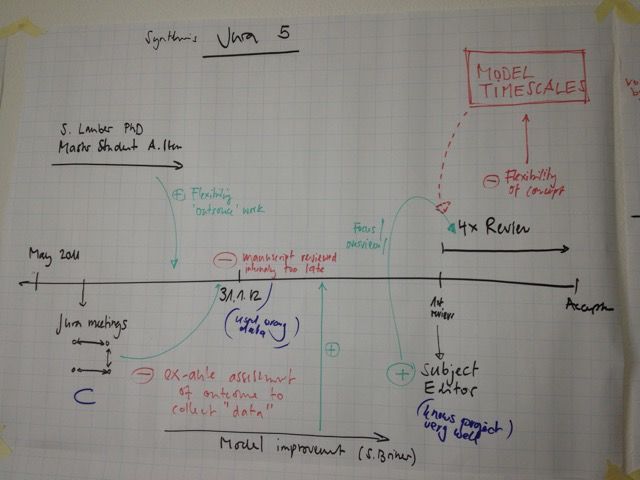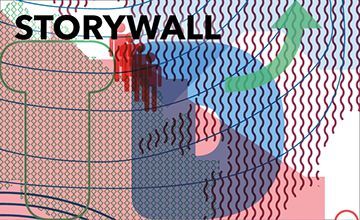Storywall
A story-based, qualitative method for retrospectively assembling crucial events in a collective process.
Wülser G 2020. Storywall. td-net toolbox profile (10). Swiss Academies of Arts and Sciences: td-net toolbox for co-producing knowledge. www.transdisciplinarity.ch/toolbox. doi.org/10.5281/zenodo.3717396
| What is the storywall method? | The storywall method allows different actors to retrospectively look at how they have perceived a joint process, e.g. a process of co-producing knowledge. It uses storytelling to collect the individual perspectives and to create a joint understanding of the past. The starting point is a simple timeline (horizontal axis) on an empty poster. The assembled group of participants agrees on and marks major process phases or crucial events of their joint story and finds a way to exchange on what has been important, for whom and why. |
| Why should it be applied? | The storywall method allows contrasting different perspectives and increases mutual understanding. It makes use of the fact that different members of a group may – at least partly – experience a process in different ways and stress different elements as having been important. |

When should it be applied? | Storywalls are normally made ex post, i.e. at the end of group processes. |
How does it work? | 1) As a starting point, a simple timeline indicating the start and the end dates of the joint process or story is provided. |
How are thought-styles bridged? | The approach to bridging thought-styles is to explain to each other how one perceived and experienced a joint process. This allows for greater mutual understanding. |
| What’s the outcome/outcome? | The outcome of a storywall exercise is a poster of the story featuring its most important elements out of the perspective of the group and its members. |
Who participates in what role? | An actor group can come together and make a storywall on its own. Depending on the complexity of the process or the group atmosphere, a facilitator, moderator or coach may be helpful. |
What do I need to prepare? | A table, a few flipcharts, other big sheets of paper or whiteboards and markers (different colours) are required. |
When not to use the method? | When knowledge co-production does not refer to a process experience. |


